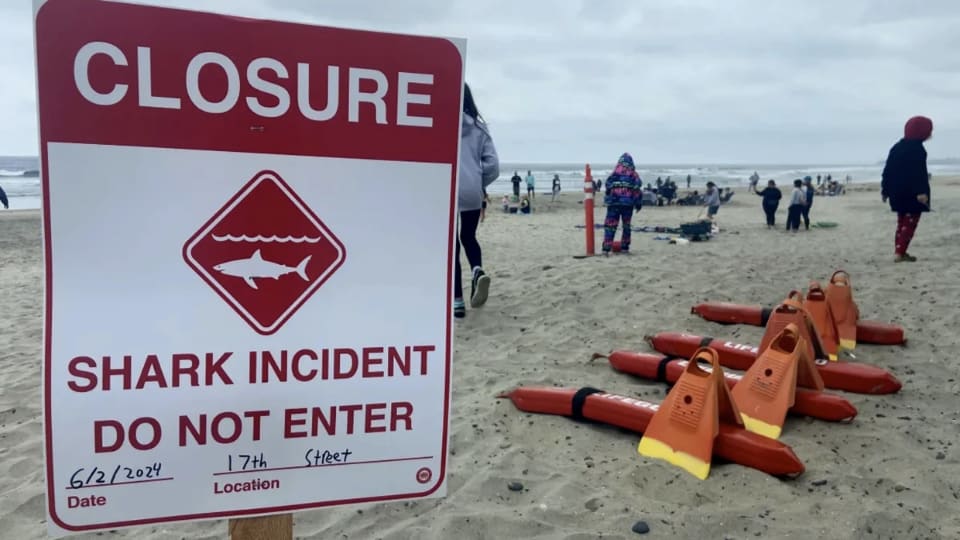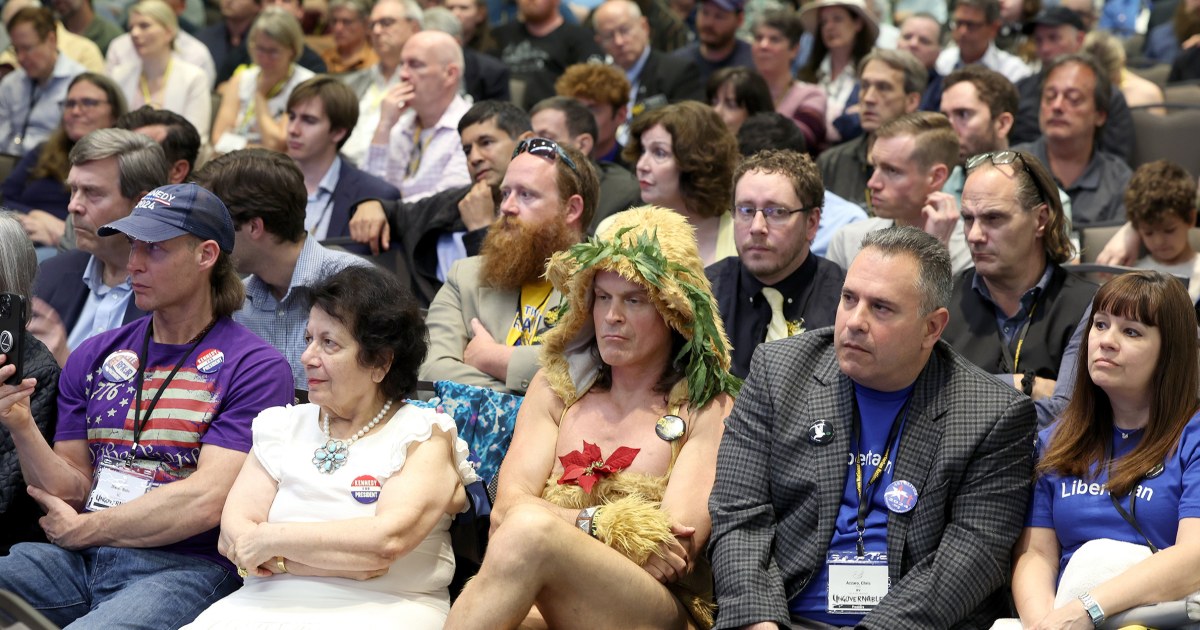California
How are California lawmakers tackling housing and homelessness this year?

Could reclassifying who is considered to be very low-income get more vulnerable people off the streets?
That’s what some lawmakers are saying as the state continues to face a homelessness crisis that only seems to have grown worse despite tens of billions of taxpayer dollars being spent trying to alleviate the problem.
According to the 2023 point in time count released in December, which details the nation’s homeless population on a single night, more than 180,000 people in California were experiencing homelessness, a roughly 6% increase from the prior year. Between a longer period of time, 2007 to 2023, California saw the largest absolute increase in the number of people experiencing homelessness, 30.5%.
And this week, Orange County unveiled its latest point in time count, which revealed a 28% increase from the previous count in 2022, despite the county upping the dollar amount allocated towards addressing homelessness.
The county reported 7,322 people approached in January said they were experiencing homelessness. The last count in 2022 tallied 5,718 people either living on the streets in Orange County or staying in shelters. Of those surveyed this year, 328 were veterans, 308 were young adults between 18 and 24 years old and 869 were seniors ages 62 or older.
So what are state legislators doing to tackle this issue in Sacramento this year, besides the usual allocation of funding for existing programs?
For one, a bill from by San Diego Assemblymember Chris Ward and co-authored by Sen. Catherine Blakespear, D-Encinitas — and recently backed by Gov. Gavin Newsom — would reclassify who is considered to be on the very low end of the income scale, which Newsom said would better equip local jurisdictions to meet the housing needs of a greater number of their population.
While the state-mandated Regional Housing Needs Allocation process categorizes those earning at or below 50% of the median income as very low income, the legislation would break out that group into three categories: Individuals earning between 30-50% of the median income would be classified as very-low income, 15-30% as extremely low-income and 0-15% as acutely low-income.
The RHNA is a process by which local governments determine the housing needs of a specific community, including the amount of new homes that have to be built and the affordability of those homes.
Being more specific about who falls under which income category will require local governments to include acutely low-income households in their housing plans as well as rezone a development site if it is not suited to fully accommodate for the acutely low- and extremely low-income households.
“Far too often, we’re attempting to address the issue of homelessness without the complete picture,” Ward said, adding that his bill would “ensure that our most vulnerable residents are included into the Regional Housing Needs Allocation so we can recognize and plan for the housing needs of those earning the lowest incomes in our state.”
Blakespear introduced similar legislation for the 2023-24 legislative session that seeks to require cities and counties to provide housing for people experiencing homelessness by including them in their zoning plans. The bill is still awaiting to be assigned to a committee.
Here are four other ways state legislators are working on housing issues this year.
Housing subsidies
Under legislation introduced by Assemblymembers Rick Zbur, D-Los Angeles, and Sharon Quirk-Silva, D-Fullerton, the state would establish a program to provide funding for counties to give housing subsidies to low-income people who meet at least one of the following criteria:
• A former foster youth who qualifies for the state’s independent living program,
• An adult 55 and older,
• An adult with a disability,
• An individual experiencing unemployment,
• An individual experiencing homelessness,
• A veteran, or
• An incarcerated individual who is likely to be unhoused after being released.
If passed, a two-year pilot program would be established in eight California counties, including Orange County, by Jan. 1, 2026.
Support for homeless students
Another bill introduced by Quirk-Silva aims to ensure resources for California’s foster and unhoused youth, including tutoring and college financial aid services, are readily available for the students who need them.
The legislation would create a new level of accountability for school districts, charters and county education offices to identify homeless students. It also would urge more collaboration between local educational agencies and programs that serve foster or unhoused youths.
“The whole goal here is to continue that liaison between foster care students and the local agencies,” she previously said.
Development in the Coastal Zone
One area of California where a lack of affordable housing is most apparent is the coastline, specifically the Coastal Zone, a geographic region that encompasses both land and water areas along the length of the California coastline from the Oregon border to the Mexico border, according to the California Coastal Commission.
That zone is exempt from California’s density bonus law, which allows developers to build additional homes above the dwelling units per acre allowed by the specific jurisdiction in exchange for reserving a percentage of the project for affordable homes.
Legislation from Assemblymember David Alvarez, D-San Diego, aims to do away with that exemption. Far less housing has been built in the state’s coastal areas than people demand, which upped the cost of housing in those areas and spilled over to inland regions, according to the Legislative Analyst’s Office.
“Wealthier areas along California’s coast need to do their part in building more housing,” Alvarez said. “The current law prevents housing along with denying access to California’s coast to the average citizen.”
Financial headwinds
Billions of dollars are spent annually in California in an attempt to put a roof over the heads of the unhoused and connect them to vital resources they need.
But a recent audit of those dollars found that the state has failed to adequately track whether that massive spending has been working, which has led to criticism of the administration from state legislators on both sides of the aisle.
A number of bills this year call for better accountability of state spending related to homelessness, including AB 2056, which would require the Department of Finance to create a public internet portal before July 1, 2025, that tracks and reports that spending.
Another bill aims to create a working group of all departments and agencies that receive homelessness funding and task the group with determining how to consolidate into one so that funding is no longer split across multiple state departments and agencies.
During a two-hour hearing this week of the Assembly’s Budget Subcommittee on Accountability and Oversight, legislators demanded data from several Newsom administration officials on the cost-effectiveness of major homelessness programs. But the officials who testified during the hearing said they could not present that data at this time.
Assemblymember Avelino Valencia, D-Anaheim, who chairs the committee, said the hearing is a testament to the urgency of the need to address the issue.
“Speed, efficiency, responsibility and the collaboration component is going to be key between our tribes, between our local, the county, the state, and of course, the state departments to ensure that we’re actually addressing the issue now and not kicking this can down the road any further,” he said.
Kaitlyn Schallhorn and Destiny Torres contributed to this report.

California
Sacramento Snapshot: How the California Legislature is tackling AI this year

If you ask Sen. Tom Umberg, the legislature’s role in regulating artificial intelligence is multi-faceted.
It’s no secret that California is expected to play an outsized role in AI regulation. After all, the state is home to many of the world’s largest AI companies, the governor’s office boasts.
But it’s a balancing act, Umberg says, of tackling concerns related to bias and transparency in the AI space with encouraging innovation and start-ups.
“At one point, (the California Legislature) had 55 bills dealing with AI, mostly focused on risks. But we are creating both the regulatory entity that will provide guidance as well as some safety mechanisms to make sure that the risks that are inherent in AI are mitigated,” said Umberg, a Santa Ana Democrat who chairs the Senate Judiciary Committee, which hears many AI-related bills.
Gov. Gavin Newsom, speaking at an AI event in San Francisco last week, also warned against over-regulating AI, Politico reported.
“I don’t want to cede this space to other state or other counties,” Newsom reportedly said. “If we over-regulate, if we overindulge, if we chase the shiny object, we could put ourselves in a perilous position.”
So what are the bills legislatures are considering this year?
Bills still in consideration — after clearing a major legislative deadline last month — tackle deepfakes (digitally altered photos or videos that seem realistic but are, in fact, fake and can be extremely harmful), data transparency and election security, among other things.
One still in play is AB 1856 from Assemblymember Tri Ta, R-Westminster, which creates misdemeanor penalties for someone found to have knowingly distributed pornographic deepfake videos or photos of someone without that person’s consent.
The bill is supported by the California State Sheriffs Association which argues that AI technology has “exacerbated the prevalence and severity of revenge porn,” which is commonly used by an ex-partner to embarrass, coerce or otherwise harm someone. But the California Public Defenders Association opposes it, arguing that it could violate First Amendment protections.
Another, from Assemblymembers Marc Berman, D-Menlo Park, and Gail Pellerin, D-Santa Cruz, is billed as an election integrity bill. It would require large online platforms to block the posting of digitally altered false images, videos or audio recordings that purport to show a candidate saying or doing something they did not actually say or do.
Earlier this year, voters in New Hampshire received a robocall that sounded like the voice of President Joe Biden encouraging them not to participate in the primary elections, according to the state’s attorney general.
“We have entered the age of AI-generated disinformation, which poses a severe risk to our elections and our democracy,” said Berman. “Deepfakes are a powerful and dangerous tool in the arsenal of those who want to wage disinformation campaigns, and they have the potential to wreak havoc on our democracy by attributing speech and conduct to a person that is false or that never happened.”
Other bills include:
Data transparency: AB 2013 requires developers of AI systems to publicize information about the data used to create the system or site. From Assemblymember Jacqui Irwin, D-Thousand Oaks, the idea is to enhance consumer protection, according to the bill’s analysis, with a greater understanding of how these AI systems and services work.
“Consumers may use this knowledge to better evaluate if they have confidence in the AI system or service, compare competing systems and services or put into place mitigation measures to address any shortcomings of the particular system or service,” Irwin said in the analysis.
Safeguards for large-scale systems: If this bill is successful, developers of powerful and large-scale AI models and the technology that trains those models would need to implement certain safeguards related to safety and security.
SB 1047 would also create CalCompute, “a public AI research cluster that will allow startups, researchers and community groups to participate in the development of large-scale AI systems,” according to the bill’s analysis.
“By focusing its requirements on the well-resourced developers of the largest and most powerful frontier models, SB 1047 puts sensible guardrails in place against risk while leaving startups free to innovate without any new burdens,” said Sen. Scott Wiener, D-San Francisco. “We know this bill is a work in progress, and we’re actively meeting with stakeholders and seeking constructive input.”
California Artificial Intelligence Research Hub: SB 893 establishes a new entity that would “facilitate collaboration between government agencies, academic institutions and private sector partners to advance artificial intelligence research and development,” according to the bill.
The idea behind the hub from Sen. Steve Padilla, D-San Diego, is to facilitate innovation in AI development; ensure AI technologies are prioritizing fairness and transparency; provide researchers with access to data, training and education; and support AI development through the building of a public computing infrastructure and ensuring access to existing commercial infrastructures, among other things.
“Emerging AI technologies are costly and energy intensive and require broad-based coordination among institutions and other sectors,” said Padilla. “Shared resources will be vital to the continued development of AI technology in California. The creation of the California Artificial Intelligence Research Hub allows us to pool and leverage the state’s financial resources and the intellectual firepower of our academic sector to democratize AI and stop it from becoming monopolized by proprietary interests alone — the tech titans.”
In other news
• Three UCI graduate students — who were arrested when police removed the Gaza Solidarity Encampment on campus on Wednesday, May 15 — traveled to Sacramento last week where they met with more than two dozen Assemblymembers and spoke about the UC’s “increasingly concerning efforts to suppress free speech on our campuses and in our workplaces,” said Mark Gradoni, one of the three arrested grad students, who are also all teaching assistants.
Sent by UAW Local 4811 — a labor union representing UC student employees and academic, graduate student and postdoctoral researchers — the students presented Assemblymembers with a letter that calls on the UC to “cease committing further unfair labor practices” connected to the campus protest when the university called on law enforcement to crack down against members and to “abide by Californian and federal law on freedom of speech and assembly,” Gradoni said.
• Actor Danny Glover was at the Capitol last week to advocate for arts funding.
“What an honor it was to welcome the incomparable Danny Glover to the State Senate today for his advocacy trip,” said Sen. Anthony Portantino, D-Burbank, on social media. “As many of you know I’ve been working on arts funding and support for our nonprofit community theaters. Mr. Glover was in the capitol to testify on behalf of that funding.”
Staff writer Hanna Kang contributed to this report.
California
Banc of California Courts Startups

Brentwood-based Banc of California last month launched a new service targeting startups in early stages.
Dubbed Build@Banc, this program looks to lure startups at seed and early-stage funding rounds.
The details remain scant, but the bank said this program will aid entrepreneurs from initial investments to initial public offerings.
“We want companies to start with us, stay with us and grow with us – from inception to IPO and beyond,” said Sean Lynden, president of venture banking at Banc of California.
Lynden led Pacwest’s expansive venture banking division prior to its merger with Banc of California last year. Its portfolio of high-growth startups included Picsart, Navitas Semiconductor and MomentFeed.
Banc of California’s service launch comes after the broader financial industry heightened its scrutiny on both startups and venture capital firms following the dramatic collapse of Silicon Valley Bank last year.
Financial institutions with venture capital arms have continued to fund startups, but investment criteria now weigh the economic resiliency of innovations in addition to disruption capability.
Citi Ventures, one of the largest players in corporate venture capital, has homed in on cash flow, burn rates and paths to profitability in its investment thesis.
Capitol One Ventures is now focused on startups that can offer strategic advantages to Capitol One’s other business lines — a push towards practical over unconventional risk.
Jared Wolff, chief executive Banc of California, previously said the valuation correction following sharp interest rate hikes hasn’t necessarily hurt the bank’s business.
Banc of California provides bridge capital – essentially loans between rounds of capital raises that offer liquidity as companies meet with investors.
California
California Town Closes Its Beaches After Grisly Shark Attack

The city of Del Mar, California announced Sunday that it was closing all its beaches for swimming and surfing after a shark bit a competitive swimmer near shore.
Authorities said the unidentified man, 46, was participating in a group training swim at 9 a.m. when he was bitten by the animal on the torso, left arm and left hand.
He suffered “injuries that are significant but not believed to be life-threatening,” the city said in a press release.
“There was a lot of bleeding, so they determined it was likely an arterial wound in the left hand and wrist area,” Del Mar’s Chief Lifeguard and Community Services Director Jonathan Edelbrock told The San Diego Union-Tribune. “He had significant injuries to his torso for sure.”
Edelbrock added that authorities believe the animal was a juvenile white shark that was close to eight feet long.
It was the city’s first shark encounter in 2024—the last attack happened on Nov. 4, according to the Union-Tribune, which reported that a 50-year-old woman was bitten in the leg while swimming with a friend, suffering minor injuries.
The Del Mar beach closure is expected to remain in effect for at least 48 hours—until 9 a.m. on Tuesday, June 4.
-

 World1 week ago
World1 week agoFamilies of Uvalde school shooting victims sue Microsoft, Meta and gunmaker
-

 Politics1 week ago
Politics1 week agoDefense Secretary Lloyd Austin to undergo nonsurgical procedure, Deputy Kathleen Hicks will assume control
-

 News1 week ago
News1 week agoHere are three possible outcomes in the Trump hush money trial : Consider This from NPR
-

 News1 week ago
News1 week agoPrimate remains on the loose in South Carolina | CNN
-

 World1 week ago
World1 week agoState of the Union: Europe's divisions over the Middle East
-

 News1 week ago
News1 week agoBoos and anti-Trump chants at Libertarian convention where former president is set to speak
-

 Movie Reviews1 week ago
Movie Reviews1 week ago'Bhaiyya Ji' movie review: Bajpayee’s 100th film fails to deliver
-

 World1 week ago
World1 week agoItaly pledges millions to support Palestinians at Rome meeting















